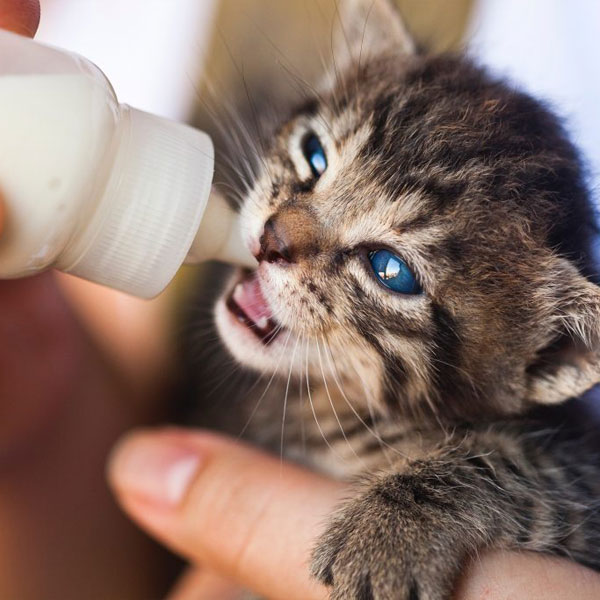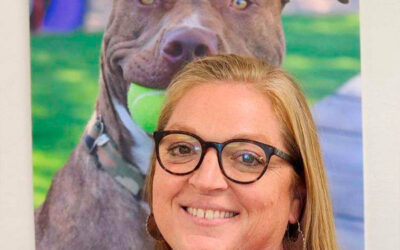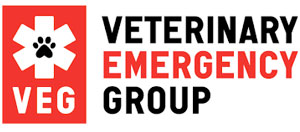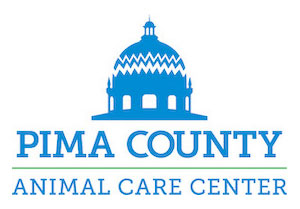In most US cities, May is a mild and pleasant spring month, but here in Tucson, the summer heat is already turning up, and with it comes kitten season. This is a time when a massive influx of homeless kittens, with or without their mothers, flood shelters city-wide. Every year, these shelters are overwhelmed, and fosters are key in providing the additional support needed to make it through these long hot months.
Luckily, there is plenty of shade at the Pima Animal Care Center (PACC) on a late May day, as opening time approaches and people begin to trickle in. Some head to the adoption center entrance, radiating excitement at the prospect of bringing home a new family member. Others hesitantly approach the intake doors with animals of their own to surrender, or with strays they’ve found. Mother and daughter Erica and Imalah head for door number three, the shelter clinic. From a stylish hot pink mesh carrier the insistent cries of Astrid and Ash, the family’s foster kittens, can be heard. Today they are back at PACC for vaccinations. Imalah explains that they stumbled onto fostering through a kind of kismet. One day they had come to the shelter with the intent of adopting an adult cat, but things kept falling through. “But I was not going home without a cat!” the teenager declared, so when she spied a couple of tiny kittens and was asked by shelter staff if she would like to foster, she was all in.
However fosters get started, their services are absolutely vital. Though PACC’s massive 2017 facility revamp significantly increased their available space, it’s still tight, especially this time of year. Carriers full of kittens seem to be squeezed into every corner. As of this writing, dogs are over capacity at 465 in shelter and 545 in foster. Cats are at capacity with around 173 cats in the shelter and an astounding 771 in foster. With 5 to 10 more litters being brought in every day, this is clearly a tough situation to sustain.
One way to ease the burden on both the shelter and the fosters is to reduce the number of animals coming in in the first place. As those who have cared for motherless kittens still in the nursing stage can attest, it can be a heartbreaking prospect. The younger the kittens, the smaller chance they have of survival without their mothers, even while being bottle-fed. Just as in the case of baby wildlife, it is best to leave kittens alone if you see them outside. Their mother is most likely around and will return. While people have the best of intentions when taking kittens to the shelter, they may be bringing down a death sentence by separating them from their mothers. Fosters and shelters do amazing work with these bottle babies, but nothing compares to the care of a mother cat.
Sometimes fostering actually includes the mother cat. Many come into the shelter along with their babies, and aside from freeing up space and resources, getting them out of the loud, stressful shelter environment is much more conducive to their well-being. This is true for all foster animals, regardless of age or species, and fostering is not as hard as some may think. PACC pays for all medical care and provides food and supplies. The main job of a foster is to provide space, care, and love during the animal’s stay in their home. The time commitment of fostering varies, but for kittens, as long as they are healthy, they only need to be up to two pounds (usually around 8 weeks) to be spayed or neutered and go back to the shelter or one of several area Petsmart’s for adoption. Just a few weeks can give one of these kittens the chance they deserve at life.
There are few real hazards associated with fostering. As long as all pets in the home are properly vaccinated, the biggest risk may just be becoming a failed foster. Imalah at first looked offended at the suggestion she may be one of these “failures” until hearing the definition of this relative misnomer. Failed foster simply means you skip the last step of sending the animals off to adoption, and adopt them yourself. “Oh yeah,” she then said confidently, “These are my cats for sure.”
Anyone interested in fostering kittens or any other animal can sign up through the PACC website, or just head out to the shelter. If you can’t foster but still want to help, remember to spay and neuter your animals, and spread the word! There are also a variety of other ways to volunteer, and of course, they are always accepting physical and financial donations. Kitten season comes every year, and every year PACC comes through for them, but not without some help. Forget the millionth Marvel movie coming to theaters this summer, fosters are the real-life superheroes.














